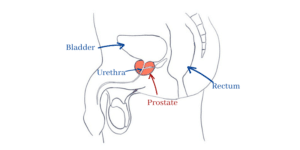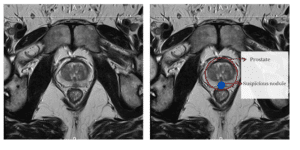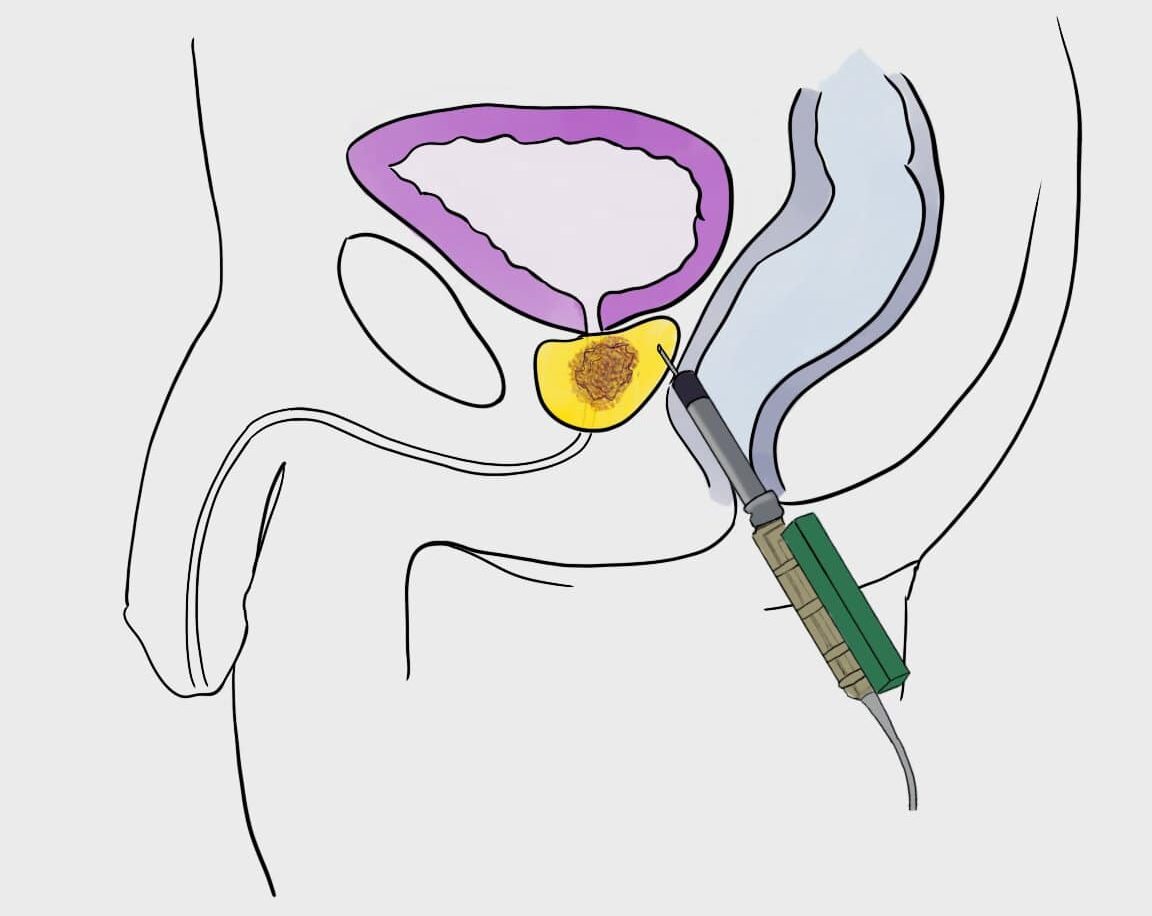1 out of 8 men will suffer prostate cancer throughout their life. Prostate cancer is the most common cancer among men, except for skin cancer. If we catch it early, nearly 100% of men will get cured. However, if it spreads, the chances get much worse. So, how do we catch it early?
There is no magical way to detect prostate cancer. However, there are 2 things we can do. First, we need to pay attention to any early symptoms. Second, we need to comply with screening tests.
1. Early symptoms of prostate cancer
Your prostate surrounds your urethra, which is the duct that carries your pee and semen.
That’s why prostate cancer causes symptoms related to peeing, like:
- you pee too often
- you have to wake up in the night to go to the toilet
- there’s blood in your pee
- you can’t empty your bladder when peeing
- there’s blood in your semen
There other things that cause these same symptoms, like infections (cistitis) or a benign enlargement of the prostate.
2. Screening tests for prostate cancer
There are 2 main screening tests:
- Prostate-Specific Antigen (PSA): PSA is a protein produced by the prostate gland. High PSA levels can mean prostate cancer but also other conditions, like infections or an enlarged prostate.
When the PSA is just a little high, we can also check the percent-free PSA. If it is low (below 20%) it’s concerning. Above that, it’s usually something else, not cancer. - Digital Rectal Exam (DRE): Your doctor will insert a finger into your rectum. That way, he’ll feel your prostate. Are there nodules? Is it harder than it should be? While this test may be uncomfortable, it is a quick and non-invasive way to detect any suspicious lumps in your prostate.
A normal prostate should feel like a soft, elastic nut.

What do you do next?
If you feel some symptoms, or if your screening tests are abnormal, you should go to the doctor.
Then, your doctor will probably need some extra tests like:
· Prostate MRI
An MRI is that machine with the shape of a tube. You get in there, stay still and they start scanning your your prostate.
It takes around 30 minutes.
It can feel a little claustrophobic but most people tolerate it well enough. If you don’t, you may need some sedation so that you’ll be half-asleep.
The MRI results will show how likely it is that you have prostate cancer and what’s the most probable location.

· Prostate biopsy
A biopsy means getting some samples of your prostate. It’s the most accurate test.
After analyzing those samples, we can find out if there is really cancer in there.
To get a biopsy, they’ll need to place some thick needles inside your prostate.
It’s not a pleasure procedure. In fact, it is a little painful, but they’ll usually sedate you and use local anesthesia in the area.
There are 2 ways to do the biopsy: through the skin of your pelvis or through your rectum.

In conclusion
The best way to detect prostate cancer early is to watch out for any symptoms. If you do have some symptoms, go to your doctor. Your doctor will take it from there, choosing those tests that are most useful for you (not everybody needs all of them).
In some places there are screening tests for prostate cancer, mainly PSA and digital rectal exam. These tests detect prostate cancer before you even have any symptoms.
Leave a Reply